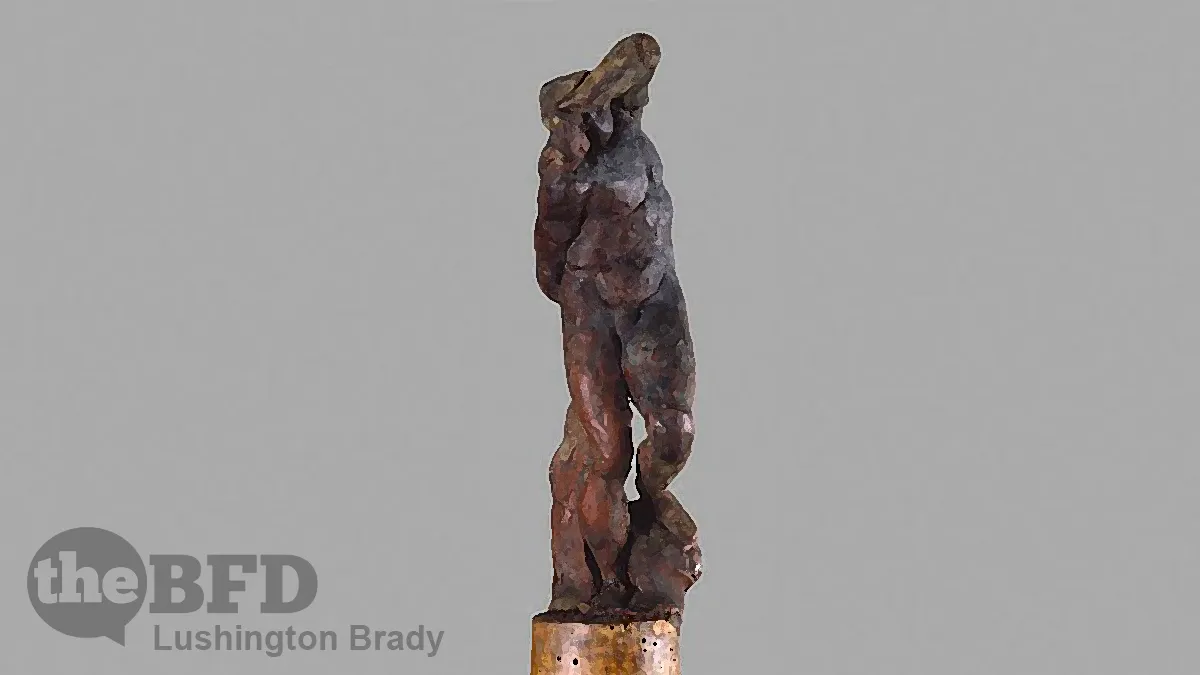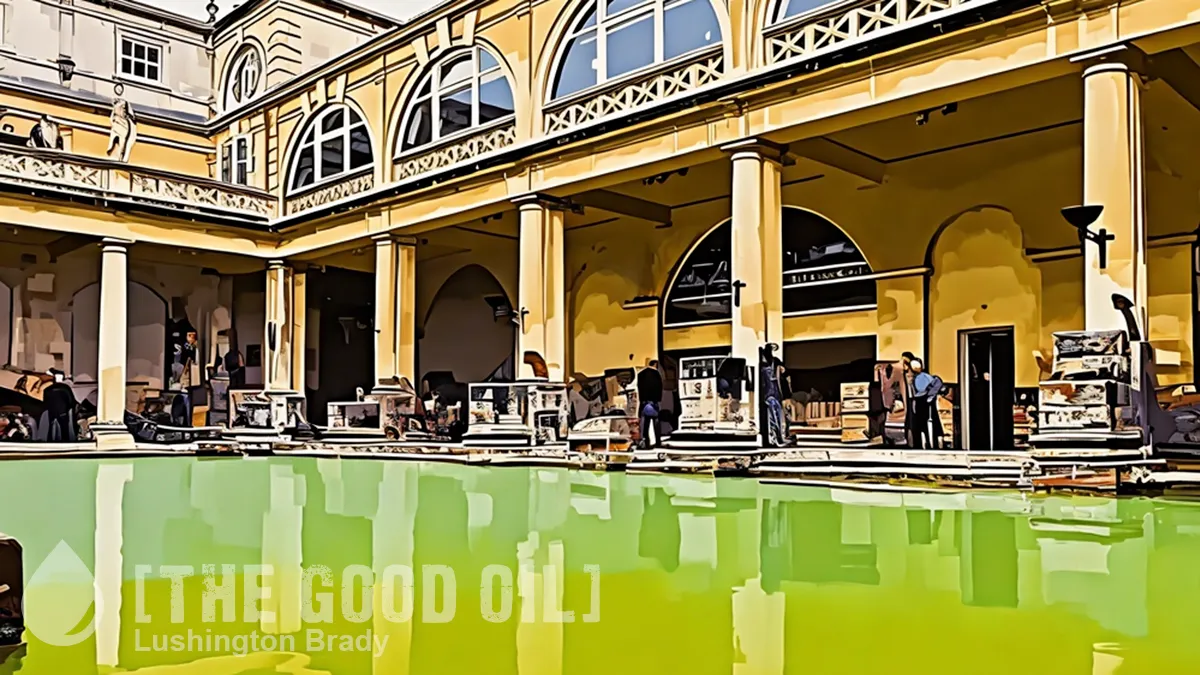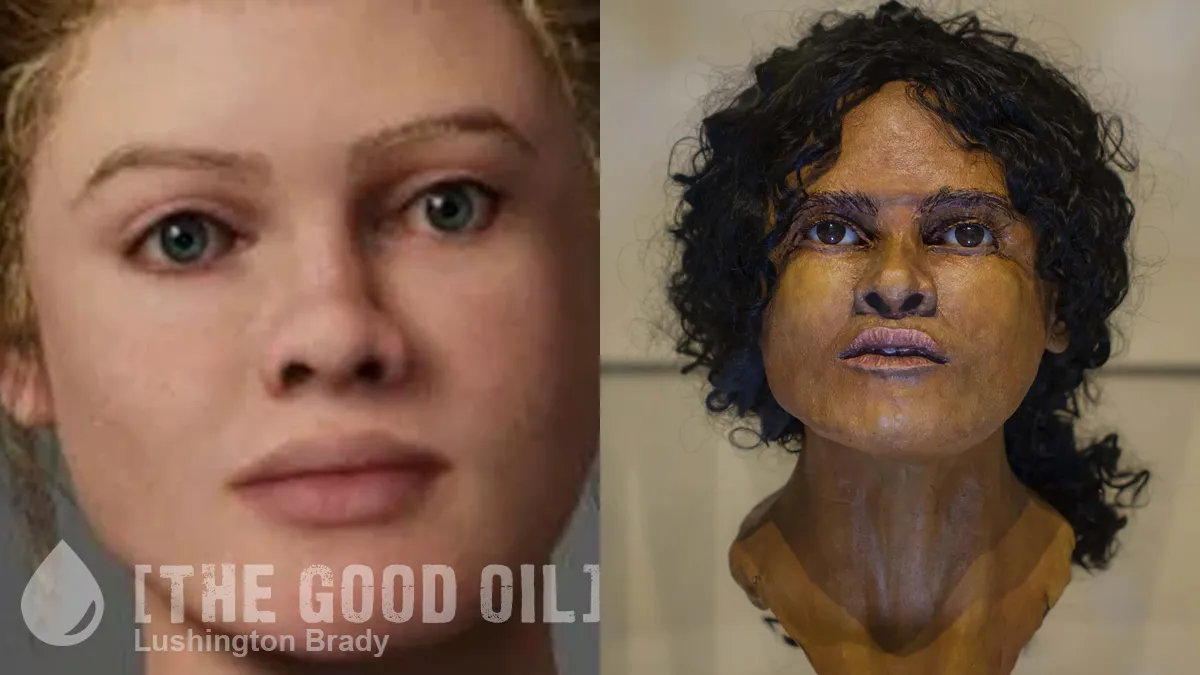Table of Contents
Michelangelo was one of the greatest artists to have ever lived. He has also been more recently outed as quite the boy-fancier. So it’s perhaps appropriate that what is probably his fingerprint has been found on the arse-cheek of a sculpture of a slave boy.
A 500-year-old wax sculpture attributed to Michelangelo might hold the famed Renaissance artist’s fingerprint, a new analysis finds.
Although he is perhaps most renowned for painting the incredible frescoes of the Sistine Chapel ceiling, Michelangelo was primarily a sculptor. He famously left several projects, including the massive tomb of Pope Julius. The wax sculpture with the fingerprint was part of that unfinished project.
Michelangelo reportedly created the wax sculpture as a study for a larger sculpture he planned for St. Peter’s Basilica in the Vatican […] However, the larger sculpture was never completed, and now the model belongs to the Victoria and Albert Museum, or the V&A, in London.
Called “A Slave,” the wax figurine had been on display, but curators moved it from an upper-level gallery during the unusually warm spring in 2020 to a cooler storage area when the museum temporarily closed during the COVID-19 pandemic, according to The Times. Five months later, curators checked up on the figurine in storage, and they noticed a never-before-seen fingerprint or thumbprint on the sculpture’s derrière.
Perhaps the changing temperatures and humidity levels modified the figurine’s wax composition, which made the print more apparent, art scholars told the Times. Given that Michelangelo reportedly created the sculpture, it’s possible that the fingerprint is his.
“It is an exciting prospect that one of Michelangelo’s prints could have survived in the wax,” Peta Motture, a senior curator at the V&A, said in the statement. “Such marks would suggest the physical presence of the creative process of an artist. It is where mind and hand somehow come together.”

The wax sculpture is already somewhat remarkable, in that Michelangelo destroyed many of his working drawings and figures.
Michelangelo destroyed many of his wax models before he died, Motture said. In fact, just before his death at age 88 in Rome in 1564, Michelangelo had many of his drawings and papers burned in two bonfires; he had other drawings burned in 1518, according to The New York Times. It’s unknown why he ordered his work burned, but renaissance biographer Giorgio Vasari opined that maybe Michelangelo didn’t want people to know the supreme effort he put into his work, as he wanted to appear as a genius whose work was perfect. Or, perhaps Michelangelo burned his work to prevent plagiarism, The New York Times reported.
Or, like Australian artist Clifton Pugh, who ordered most of his working sketches burned after his death, Michelangelo didn’t want his legacy tainted by a mass of inferior work.
While in Florence, Italy, Michelangelo made the 7-inch-tall (17.6 centimeters) figurine with the fingerprint, some time between 1516 and 1519. Later, he used the figurine as a model to create the marble statue “Young Slave,” which is unfinished. This larger statue was designed for the tomb of Pope Julius II. But the design for the pope’s tomb was later changed, and so now the unfinished statue — which has a few differences from the earlier model — sits at the Accademia gallery in Florence, according to the V&A.
“A Slave” was acquired in 1854 by the Museum of Ornamental Art at Marlborough House, which later became the V&A. In 1924, a member of the public fell and knocked over the figurine, smashing its limbs, The Telegraph reported. The museum carefully pieced it back together, and did a “pretty amazing” repair job, Victoria Oakley, a conservator at the V&A, told The Telegraph. But after the accident, additives that the artist, presumably Michelangelo, imbibed in the wax began to seep out, which created a dark spot on the surface, she said.
To check the claim that the finger or thumb print on the figurine’s rear is really Michelangelo’s, V&A staff plan to compare it with a fingerprint on a 1530 terracotta statue known as “Two Wrestlers,” which is known to have a fingerprint from Michelangelo
LiveScience
Michelangelo also left behind a trail of what we would call today “Easter Eggs”.
For instance, during the work on the Sistine Chapel, the Papal Master of Ceremonies, Biagio de Cesena complained about the “shameful” nude figures. In retaliation, Michelangelo depicted de Cesena as Minos, the judge of Hell – complete with donkey ears and a snake biting his penis.
Perhaps to indicate how put-upon he felt about the whole Sistine Chapel business, Michelangelo also worked his own likeness into the painting of The Last Judgement, in the flayed skin of the martyred St. Bartholomew.

Please share this article so that others can discover The BFD









![[The Good Oil] Stuff Up of the Day](/content/images/size/w1304/format/webp/2024/09/Stuff-up-image-1.webp)